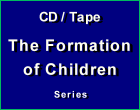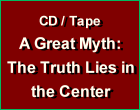Formation of Children
 |
 |
 |
 |
 |
 |
 |
Talking Animals in Children’s Books
After complimenting a TIA article in which Miss Elizabeth Lozowski listed some recommended children's books, a reader presented her misgivings about children's books with talking animals or anthropomorphism, which is simply the attribution of human characteristics or behavior to non-human entities, including animals.
She writes:
I am not only searching for children's books with beautiful images, but also for books in whose stories I can have confidence. I am troubled by the anthropomorphism so rampant in children's literature. I want to teach my 17-month-old son about reality. I tell him a bit about animals and thankfully we have a neighboring pasture where he is able to observe a couple horses up close. He sees dogs and cats at a distance.
 So many of these books pretend that animals wear clothing, talk, dance and eat like humans. I feel almost as if I will be lying to my child. And how can I expect him to distinguish between these fake worlds and the real "fantastic" stories of the saints' lives? It seems almost an offense to the supernatural to read these stories to our children, who are just beginning to learn about the world.
So many of these books pretend that animals wear clothing, talk, dance and eat like humans. I feel almost as if I will be lying to my child. And how can I expect him to distinguish between these fake worlds and the real "fantastic" stories of the saints' lives? It seems almost an offense to the supernatural to read these stories to our children, who are just beginning to learn about the world.
Please don't misunderstand me: I am not totally opposed to these books and was even planning to purchase Peter Rabbit. However, I am troubled and confused.
I have a kind of friendship with some agrarian Anabaptists who offered me free courses at their school. They are opposed to anthropomorphism at least in part because it teaches children a false idea of animals and can foster an effeminate attitude and thus a reluctance or antagonism towards slaughtering and eating animals. They believe in a wholesome respect for animals, and while as a Catholic I of course reject their heresies, I sympathize with their ideas in this case.
The bad talking animals
I understand your concerns, because so many comic-type animals and animated TV characters presented for children today look and act ridiculous and vulgar. They neither reflect innate characteristics of the animals God made nor the charm and beauty of the animal kingdom.
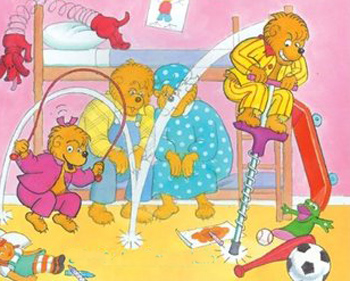
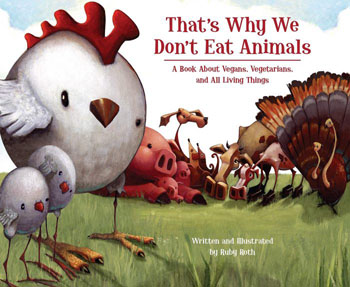 Of course books with such portrayals are not good for children, and vigilant parents will not purchase them.
Of course books with such portrayals are not good for children, and vigilant parents will not purchase them.
An example of what to avoid would be books and series that feature characters like the Bernstein Bears, where the children/cubs mock their parents, the father acts idiotic and crude, all wear modern egalitarian clothing, etc. Or, Family Guy, a self-described "subversive animated comedy" with its sarcastic white Lab called Brian. I would include in this category the very popular Dr. Seuss Cat in the Hat series.
Books with stupid or silly talking animals are not good for children simply because they encourage them to be silly and foolish. This comic world wants to inoculate children with a taste for prosaic and vulgar things and make them lose their natural attraction for things that are serious and sublime.
There is nothing wholesome or nourishing in this kind of children's book that stresses the ridiculous and boorish vs. the marvelous.
Other bad talking animal stories are the modern books and movies where animals preach about how bad and evil humans are, based on modern theories of animal rights and/ or climate change. Clearly you should reject this type of story, which makes a child effeminate and impels them to think that animals are equal to humans.
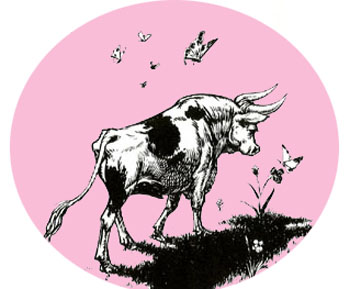 Examples of such harmful movies are All Dogs Go to Heaven and Disney’s
Brother Bear. In the book category is the Seekers series, where four bears journey to save the world from the pollution and human violence.
The Story of Ferdinand the Bull fosters pacifism and animosity towards humans.
Examples of such harmful movies are All Dogs Go to Heaven and Disney’s
Brother Bear. In the book category is the Seekers series, where four bears journey to save the world from the pollution and human violence.
The Story of Ferdinand the Bull fosters pacifism and animosity towards humans.
These are obviously wrong, just as kissing animals and treating your pets like humans is wrong; that sentimental attitude toward animals is what leads to effeminate squeamishness over slaughtering animals for the table.
The good talking animals
Having said that, let us not, as they say, throw the baby out with the bathwater. There are many good children's books and fairy tales with talking animals that help to give a strong and healthy formation to your children.
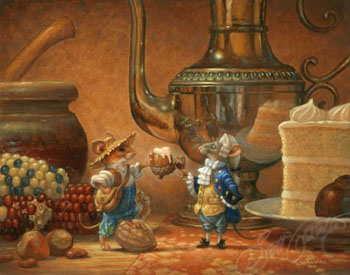 Aesop, the Ancient Greek master of this form of fable, had the genius to represent animals with the characteristics of the men they typify. And so, we have the quick hare, the wily fox, the brave lion, the slow tortoise, the innocent lamb, the vain crow, the deceitful snake, as characters that speak in short narratives with moral lessons.
Aesop, the Ancient Greek master of this form of fable, had the genius to represent animals with the characteristics of the men they typify. And so, we have the quick hare, the wily fox, the brave lion, the slow tortoise, the innocent lamb, the vain crow, the deceitful snake, as characters that speak in short narratives with moral lessons.
The use of animals as characters that convey ideas by analogy is age-old and universal. Every culture and people have their talking-animal stories and fairy tales, often told around the family hearth, repeated from generation to generation. Even Holy Scriptures instructs us to study the animals to learn lessons to change our bad habits and perfect ourselves. Solomon tell us: Go to the ant, thou sluggard, consider her ways and be wise. (Prov 6:6)
The people of medieval Europe lived in daily contact with domestic and wild animals. And so, the talking animal made its way naturally into the medieval beast fables, the folk and fairy tales of each people, charming the young and the old alike. Some examples of such stories are Little Red Riding Hood, The Three Little Pigs, Puss in Boots, The Town Musicians of Bremen, The Goose Girl, and Billy Goats Gruff. Let me emphasize that such stories never created confusion in the children about eating animals.
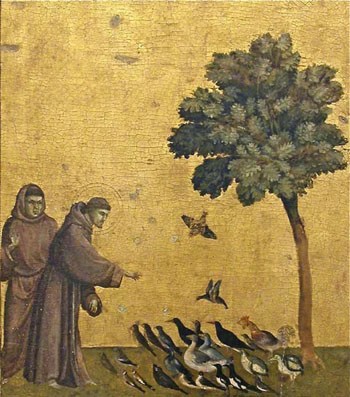 Why is that? Because in a healthy Catholic environment, a child innately understands the purpose of Creation and his place in it. He is not nourished on the modern day illusions about animals being equal to man. He conceives animals as beasts to serve mankind or give him joy as a reflection of Creation. The good animal stories can actually lead a child to a deeper appreciation and respect for animals as a reflection of some aspect of God.
Why is that? Because in a healthy Catholic environment, a child innately understands the purpose of Creation and his place in it. He is not nourished on the modern day illusions about animals being equal to man. He conceives animals as beasts to serve mankind or give him joy as a reflection of Creation. The good animal stories can actually lead a child to a deeper appreciation and respect for animals as a reflection of some aspect of God.
If you want your son to have a sound and hierarchical vision of the world, do not strip his world of fairy tales and the marvelous as the Protestants tend to do. They have a pragmatic and utilitarian mindset, looking only at the utility of an animal for their needs and rejecting the idea of anthropomorphism as superfluous and impractical.
The Catholic Saints certainly understood the place of animals in God’s Creation, and many of them also had a special affection for them. St. Martin de Porres fed and talked to mice, St. Anthony of Padua preached to the fish, and St. Francis of Assisi befriended many animals. A child who has read these Saint legends has no difficulty appreciating talking animals in folk legends, for both add marvel and mystery to the world.
Helping your child to admire Creation
The child, who has a strong tendency to see the image and likeness of God in the ensemble of the universe or in each one of its parts, is thus naturally drawn to see the reflection of God in the things around him, including the animals. This tendency toward contemplation is actually developed in the fairy tales and folk fables with their talking animals.
 The nobleness of the lion, the high horizons of the eagle, the industry of the ant – these are good qualities that make the animals admirable. Other creatures, however, represent sin and evil that entered the world: the croaking swollen frog, the sinister spider weaving its web, the blood-sucking bat, the foolish mimicking ape and of course the fork-tongued serpent.
The nobleness of the lion, the high horizons of the eagle, the industry of the ant – these are good qualities that make the animals admirable. Other creatures, however, represent sin and evil that entered the world: the croaking swollen frog, the sinister spider weaving its web, the blood-sucking bat, the foolish mimicking ape and of course the fork-tongued serpent.
As Dr. Plinio notes in his article titled The Happiness of an Idealistic Child, fairy tales with their talking animals and fairy godmothers and ugly witches can open the child to certain truths of Religion because they contain truths about what is good and evil, beautiful and ugly, right and wrong.
When it has to be shown that fairy tales are not true, the child can easily realize that the tale is just a story. Dr. Plinio notes: "Still, he likes to hear the tale that is a lie because it tells him something that is true. It is a fanciful envelope that carries a magnificent, hidden truth."
I would suggest that, as a mother who wants to raise your son well, you read and contemplate this excellent series by Dr. Plinio. It will help you to understand how important it is to develop a sacral contemplation of the image and likeness of God in the world around us, in the details of each object, plant and animal.
 I would also suggest you include in your children's library those fairy tales and folk stories not just from England and the Americas (Mother Goose Nursery Rhymes, The Adventures of Br'er Rabbit, ect.), but also folk legends from other countries, especially those of your family nationality (French, Polish, Russian, Spanish, Mexican, etc.)
I would also suggest you include in your children's library those fairy tales and folk stories not just from England and the Americas (Mother Goose Nursery Rhymes, The Adventures of Br'er Rabbit, ect.), but also folk legends from other countries, especially those of your family nationality (French, Polish, Russian, Spanish, Mexican, etc.)
Each nationality has a particular way of representing its own spirit and mentality in its folk and fairy tales.
Here are a few animal tales from different countries: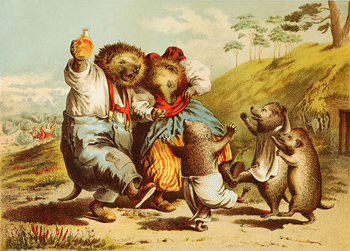 The English, for example, have an especial love for nature, and this is brought to life in stories such as Peter Rabbit, Wind in the Willows, The Many Adventures of Winnie the Pooh, and The Chronicles of Narnia. In these stories, the animals have distinct personalities that resonate with the reader, because they are stereotypes of the people around him.
The English, for example, have an especial love for nature, and this is brought to life in stories such as Peter Rabbit, Wind in the Willows, The Many Adventures of Winnie the Pooh, and The Chronicles of Narnia. In these stories, the animals have distinct personalities that resonate with the reader, because they are stereotypes of the people around him.
As a final suggestion, I would try to avoid those Protestant sources you mentioned, with their emphasis on the practical and efficient “return to nature.” It is not this spirit that made the Middle Ages or that will build the Reign of Mary.
The principal tonus of the Middle Ages was the spirit of admiration for the marvelous and desire to do and make all things for the glory of God. This is the spirit we need to develop in ourselves and our children to become the souls God will choose to construct a new social order that makes a true reflection of Heaven on earth.
I hope this is of some help to you in your laudable intent to be a Catholic mother who raises a virile, militant and good son.
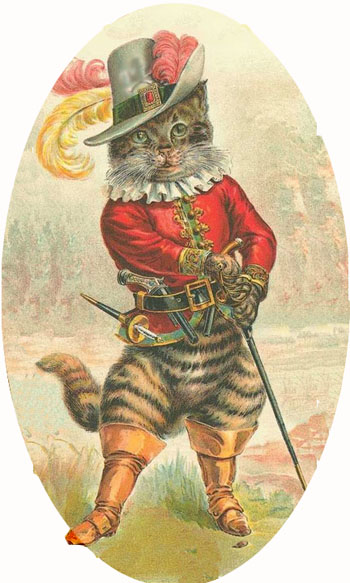

She writes:
I am not only searching for children's books with beautiful images, but also for books in whose stories I can have confidence. I am troubled by the anthropomorphism so rampant in children's literature. I want to teach my 17-month-old son about reality. I tell him a bit about animals and thankfully we have a neighboring pasture where he is able to observe a couple horses up close. He sees dogs and cats at a distance.

Talking animals books flood the market.
Are they good?
Please don't misunderstand me: I am not totally opposed to these books and was even planning to purchase Peter Rabbit. However, I am troubled and confused.
I have a kind of friendship with some agrarian Anabaptists who offered me free courses at their school. They are opposed to anthropomorphism at least in part because it teaches children a false idea of animals and can foster an effeminate attitude and thus a reluctance or antagonism towards slaughtering and eating animals. They believe in a wholesome respect for animals, and while as a Catholic I of course reject their heresies, I sympathize with their ideas in this case.
The bad talking animals
I understand your concerns, because so many comic-type animals and animated TV characters presented for children today look and act ridiculous and vulgar. They neither reflect innate characteristics of the animals God made nor the charm and beauty of the animal kingdom.

The bad customs of the Berenstein Bears; below, a ‘vegan’ book that criticizes eating animals

An example of what to avoid would be books and series that feature characters like the Bernstein Bears, where the children/cubs mock their parents, the father acts idiotic and crude, all wear modern egalitarian clothing, etc. Or, Family Guy, a self-described "subversive animated comedy" with its sarcastic white Lab called Brian. I would include in this category the very popular Dr. Seuss Cat in the Hat series.
Books with stupid or silly talking animals are not good for children simply because they encourage them to be silly and foolish. This comic world wants to inoculate children with a taste for prosaic and vulgar things and make them lose their natural attraction for things that are serious and sublime.
There is nothing wholesome or nourishing in this kind of children's book that stresses the ridiculous and boorish vs. the marvelous.
Other bad talking animal stories are the modern books and movies where animals preach about how bad and evil humans are, based on modern theories of animal rights and/ or climate change. Clearly you should reject this type of story, which makes a child effeminate and impels them to think that animals are equal to humans.

Pacifist, flower-loving Ferdinand refuses
to fight in the bullfighters ring
These are obviously wrong, just as kissing animals and treating your pets like humans is wrong; that sentimental attitude toward animals is what leads to effeminate squeamishness over slaughtering animals for the table.
The good talking animals
Having said that, let us not, as they say, throw the baby out with the bathwater. There are many good children's books and fairy tales with talking animals that help to give a strong and healthy formation to your children.

The country mouse envies the city mouse in one of Aesop's Fables
The use of animals as characters that convey ideas by analogy is age-old and universal. Every culture and people have their talking-animal stories and fairy tales, often told around the family hearth, repeated from generation to generation. Even Holy Scriptures instructs us to study the animals to learn lessons to change our bad habits and perfect ourselves. Solomon tell us: Go to the ant, thou sluggard, consider her ways and be wise. (Prov 6:6)
The people of medieval Europe lived in daily contact with domestic and wild animals. And so, the talking animal made its way naturally into the medieval beast fables, the folk and fairy tales of each people, charming the young and the old alike. Some examples of such stories are Little Red Riding Hood, The Three Little Pigs, Puss in Boots, The Town Musicians of Bremen, The Goose Girl, and Billy Goats Gruff. Let me emphasize that such stories never created confusion in the children about eating animals.

St. Francis preaches to the birds who gather to listen
If you want your son to have a sound and hierarchical vision of the world, do not strip his world of fairy tales and the marvelous as the Protestants tend to do. They have a pragmatic and utilitarian mindset, looking only at the utility of an animal for their needs and rejecting the idea of anthropomorphism as superfluous and impractical.
The Catholic Saints certainly understood the place of animals in God’s Creation, and many of them also had a special affection for them. St. Martin de Porres fed and talked to mice, St. Anthony of Padua preached to the fish, and St. Francis of Assisi befriended many animals. A child who has read these Saint legends has no difficulty appreciating talking animals in folk legends, for both add marvel and mystery to the world.
Helping your child to admire Creation
The child, who has a strong tendency to see the image and likeness of God in the ensemble of the universe or in each one of its parts, is thus naturally drawn to see the reflection of God in the things around him, including the animals. This tendency toward contemplation is actually developed in the fairy tales and folk fables with their talking animals.

Animal characters in Aesop's' Fables
As Dr. Plinio notes in his article titled The Happiness of an Idealistic Child, fairy tales with their talking animals and fairy godmothers and ugly witches can open the child to certain truths of Religion because they contain truths about what is good and evil, beautiful and ugly, right and wrong.
When it has to be shown that fairy tales are not true, the child can easily realize that the tale is just a story. Dr. Plinio notes: "Still, he likes to hear the tale that is a lie because it tells him something that is true. It is a fanciful envelope that carries a magnificent, hidden truth."
I would suggest that, as a mother who wants to raise your son well, you read and contemplate this excellent series by Dr. Plinio. It will help you to understand how important it is to develop a sacral contemplation of the image and likeness of God in the world around us, in the details of each object, plant and animal.

Br'er Rabbit and Br'er Fox, charming characters & stories
Each nationality has a particular way of representing its own spirit and mentality in its folk and fairy tales.
Here are a few animal tales from different countries:
- The Cat and the Mouse from England;
-
The Crow, the Cock, and the Frog from the French fairy tale Good Little Henry;
- Why the Stork loves Holland from the Netherlands;
- The Fox and the Cat from the Ukraine,
- How the Rabbit Lost His Tail from Brazil;
- The Turtle and the Lizard from the Philippines;
- Old Jackal and Young Baboon from South Africa;
- The Hare and the Hedgehog from Germany;
- The Colony of Cats from Italy.

The jovial Hedgehog family in the German story The Hare and the Hedgehog
As a final suggestion, I would try to avoid those Protestant sources you mentioned, with their emphasis on the practical and efficient “return to nature.” It is not this spirit that made the Middle Ages or that will build the Reign of Mary.
The principal tonus of the Middle Ages was the spirit of admiration for the marvelous and desire to do and make all things for the glory of God. This is the spirit we need to develop in ourselves and our children to become the souls God will choose to construct a new social order that makes a true reflection of Heaven on earth.
I hope this is of some help to you in your laudable intent to be a Catholic mother who raises a virile, militant and good son.

A dashing Puss in Boots draws his sword

Posted September 14, 2020
______________________
______________________






